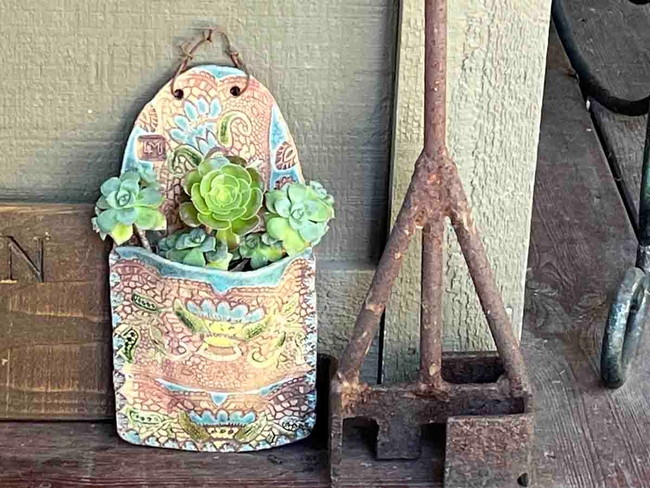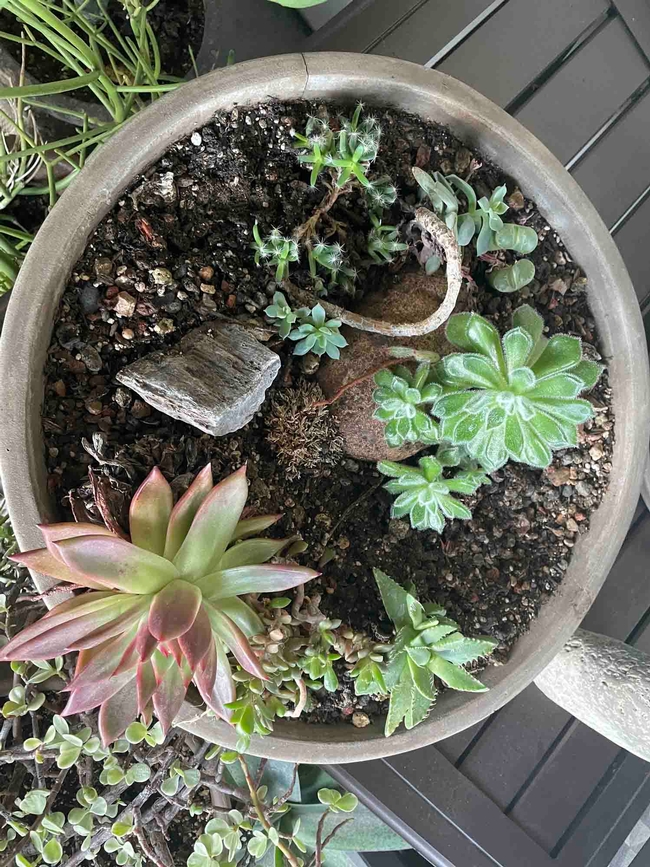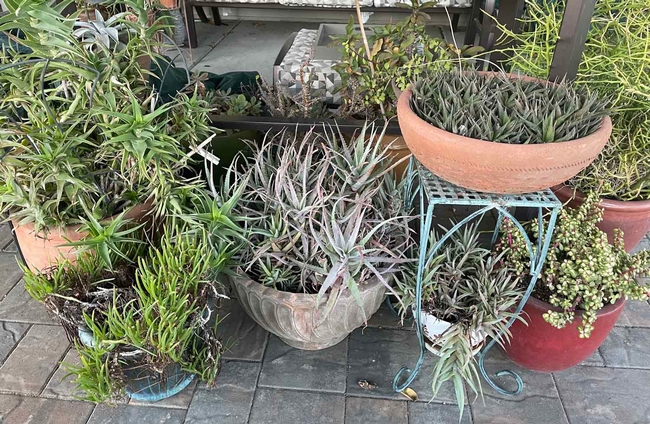Butte County has a Mediterranean climate where drought conditions occur naturally from May to October. A wide variety of succulent plants have become popular across the country in recent years, and our local gardeners are no exception. Not only are succulents drought tolerant, they grow almost anywhere. They require little care and only small amounts of soil to thrive. They are bold and colorful. Some are able to take short dry freezes and hot sun, although most need some filtered shade in the heat of the Sacramento Valley.

Offsets are small plants that grow at the base of the main specimen. Aloe, Echeveria, and Sempervivum (hens and chicks) all produce offsets. To propagate more plants from a mature offset-producing specimen, follow these steps:
1) Remove offsets with a sharp clipper, or by twisting gently.
2) Be careful to avoid damaging any roots that have already emerged.
3) Place the offsets into cactus mix or a combination of sand and perlite.
4) Spray water directly, but gently and sparingly, on the offset daily. Do not soak the soil.
5) Wait three to four weeks for strong roots to develop.

1) Choose a leaf in good health.
2) Pull the leaf off neatly. Leaves that drop from the plant can be used if they are healthy and plump. If you use clippers be sure the end of the leaf is not cut off.
3) Let the leaf end dry for 1-3 days. Do not water. This allows the wound to seal and keeps pathogens out during the rooting process.
4) Once the leaf ends are dry, place the leaves on top of dry cactus soil. Do not bury or semi-bury them into the soil. The roots will find their way into the soil on their own. You can also create a rooting medium by mixing together a 50/50 combination of compost and fine pumice or grit.
5) Spray with water sparingly every one to two days for four to six weeks. Do not soak.
6) After a few weeks you will see pink roots at the ends of the leaves and then tiny baby plants will begin to grow.
7) Once small plants have developed, separate them out and plant them in well-draining cactus soil, then water well once a week.
All succulents can be propagated by division or stem cuttings, but it is more efficient to divide or stem cut Aeonium, Sedum, Cotyledons and Sansevieria, as follows:
1) For Aeonium, cut the rosette from the stem. For Sansevieria, cut a leaf in sections marking which way is down. For Sedum and Cotyledon, cut sections of the plants with leaves attached.
2) Let all the parts dry out and create a callous where they have been cut.
3) Once they are dry, put the sections into cactus soil.
4) Spray on top of the cuttings regularly but sparingly. Do not soak.
5) They are rooted when you see new growth.

Interested in propagating other kinds of plants as well? Attend the Master Gardener workshop on Propagation, Monday October 9in Paradise. For descriptions of this and all the other workshops in the Master Gardeners' Fall Workshop Series, visit our website. All workshops are free, but registration is required.
Want some plants propagated by Master Gardeners? Come to our Plant Sale on Saturday, September 30, 9 am till noon at our Demonstration Garden at Patrick Ranch, 10381 Midway, Durham. For more information, and a partial list of the plants that will be available, visit our Plant Sale webpage.
UC Master Gardeners of Butte County are part of the University of California Cooperative Extension (UCCE) system. To learn more about us and our upcoming events, and for help with gardening in our area visit our website. If you have a gardening question or problem, email the Hotline at mgbutte@ucanr.edu or leave a phone message on our Hotline at 530-552-5812. To speak to a Master Gardener about a gardening issue, or to drop by the MG office during Hotline hours, see the most current information on our Ask Us section of our website.